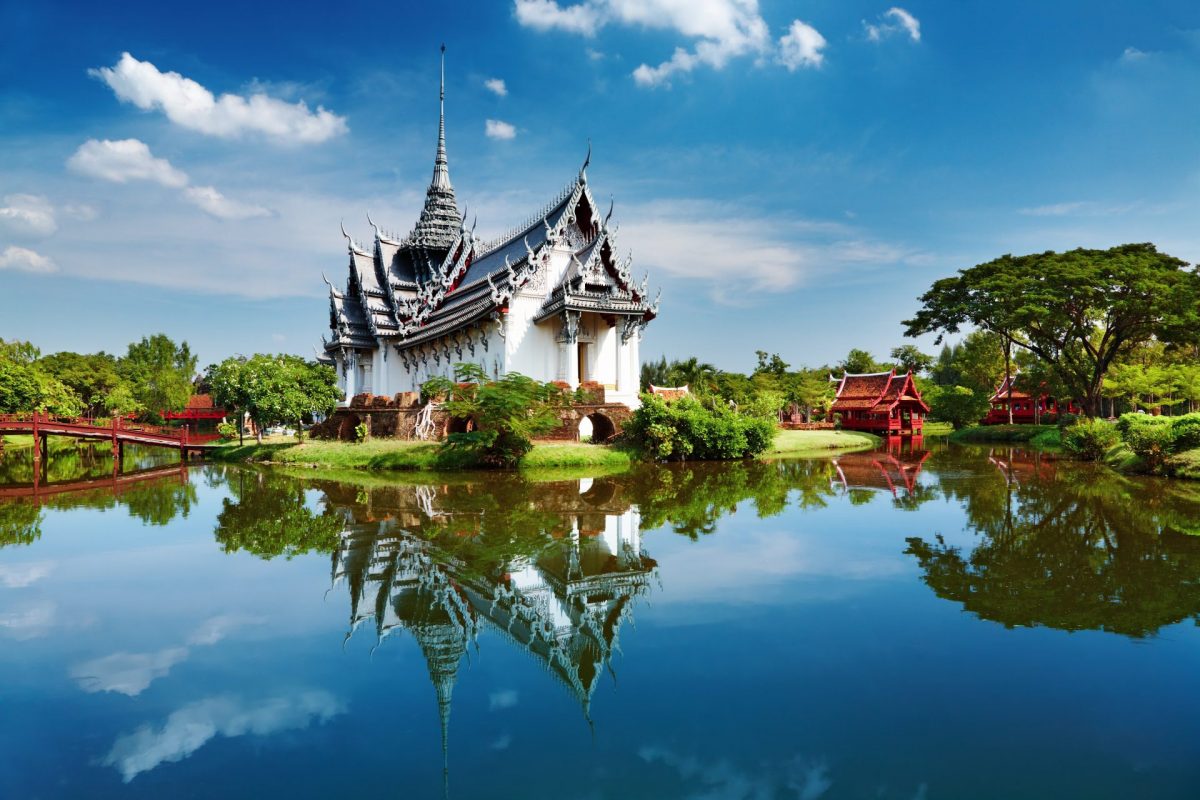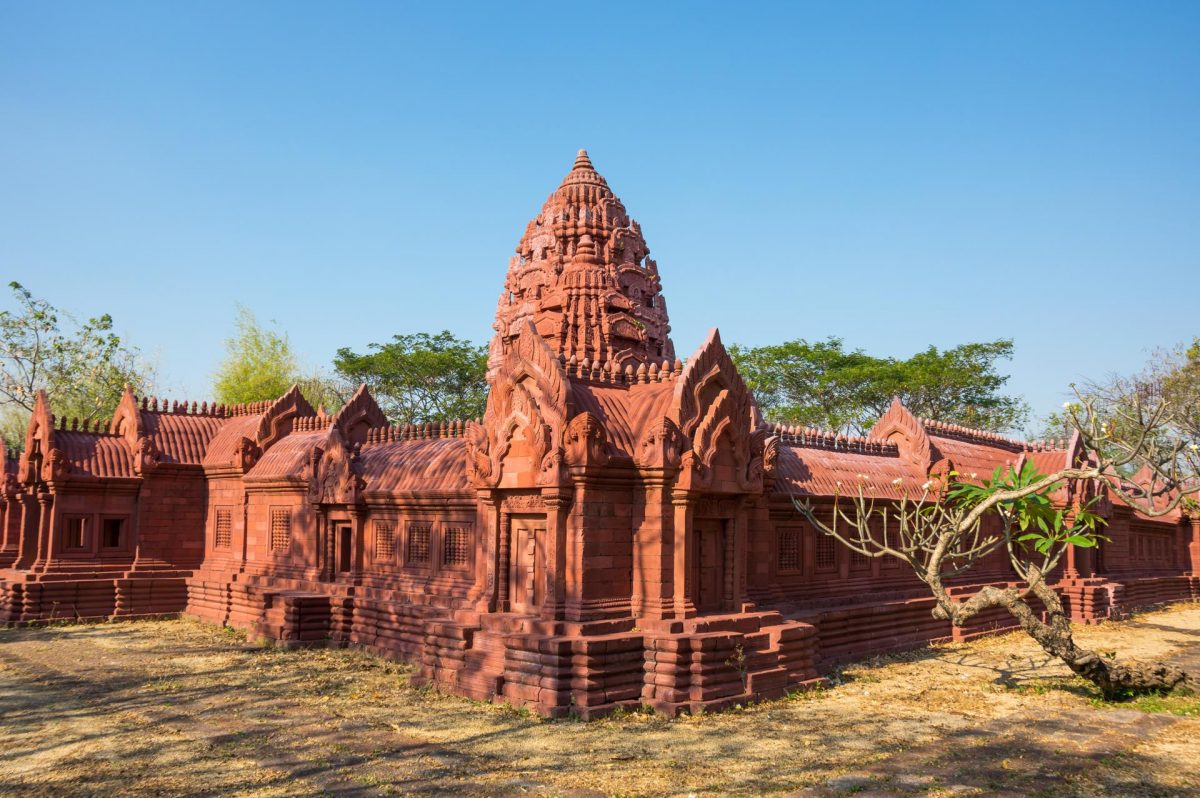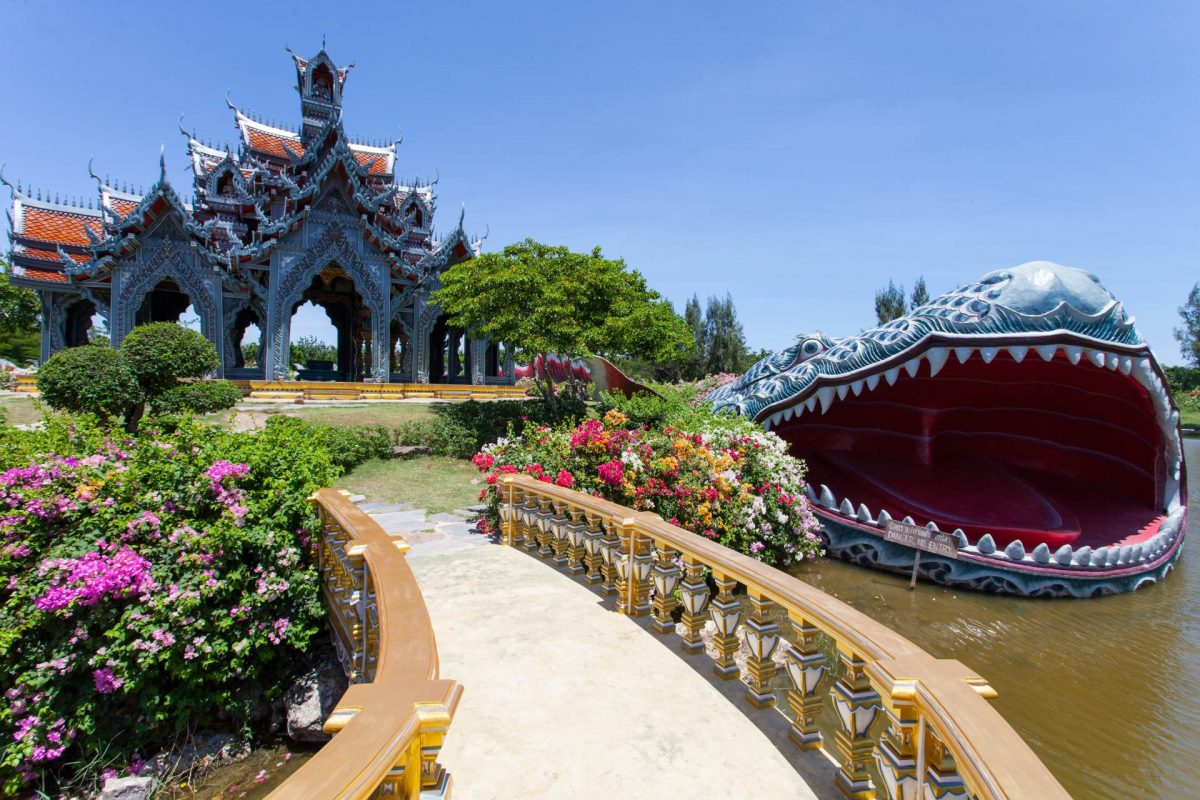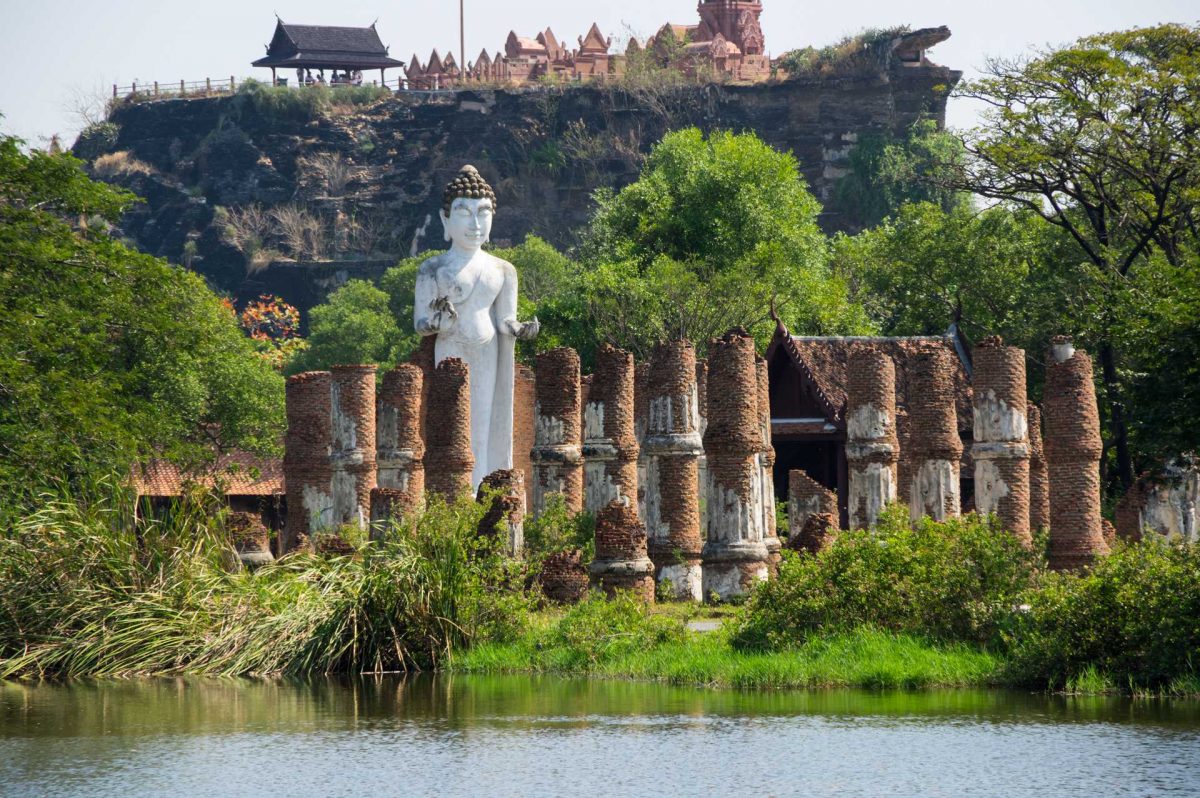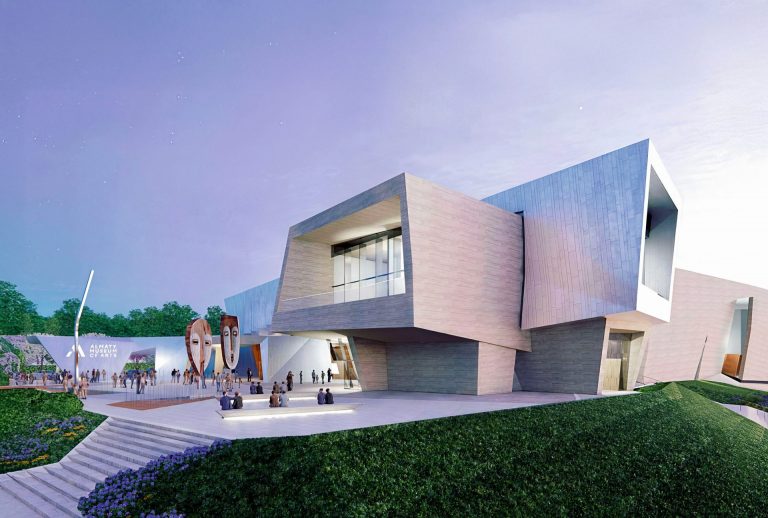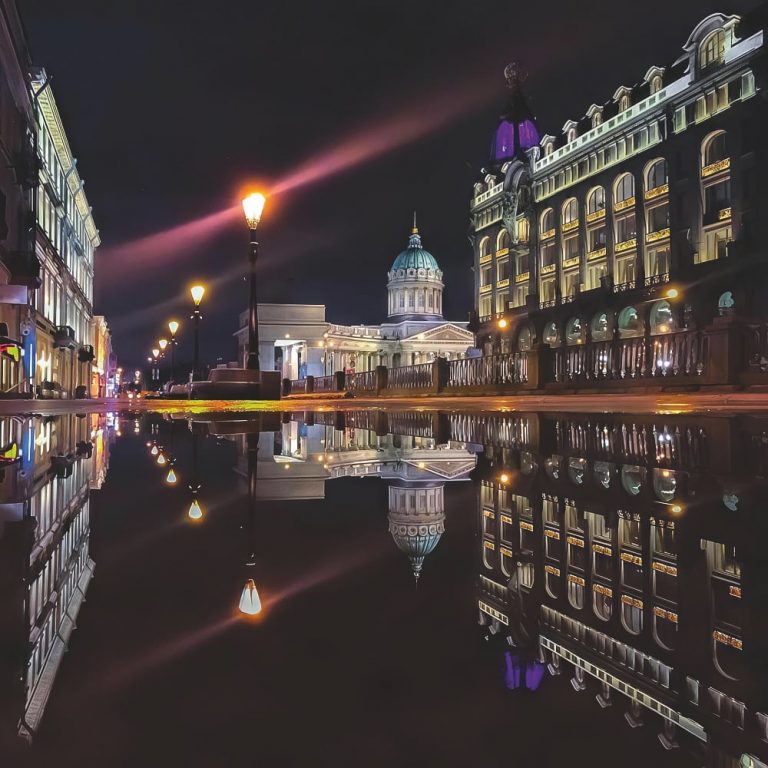If your acquaintance of Thailand doesn’t go far beyond beaches and sextourism, you should certainly visit the Ancient City near Bangkok. It is here that you can appraise the real treasures of a most exciting country in the world.
After the Second World War national heritage parks emerged all over the world as kind of apprehension that culture is to triumph over barbarity. Park Muangboran, named Ancient Siam, commenced in 1963 by the entrepreneurial incentive of Lek Viriyaphant and encompassed an area, 33 km from Bangkok. As long as 10 years Lek Viriyaphant was infatuated with the idea of creating a miniature replica of Thailand. Today there are more than 210 constructions of different types and styles: varying from a floating market and palaces to monasteries and sanctuaries. Hence, here is the largest open-air architectural park in the world.
Buddhism in Cross-roads
Buddhism spread from India to many countries, enhanced by local traditions and tints. Thailand of its history have highlighted new architectural forms and sc ulptural shapes. One of the greatest worships here is Buddha Mucalinda, the image of meditating Buddha and the seven-headed King of Serpents, spreading over him to protect. If you visit the park, be sure to attend the Big Hall of the monastery Maha That — looking so much as ancient temples.
Wat, Prang and Vihan
Buddhism gave birth to diverse iconic forms. They were all located in wats. A wat is an area of worshipping Buddha; it may be a monastery, a sanctuary for wanderers, several temples or stupas on one site. As a rule, the central place belongs to a prang. In simple words, a prang is a temple, though looking more like a tower.
Vihan is another interesting construction. Actually, it features a spacious hall where all the Buddhist wanderers could stay. It also represents a place for various ceremonies. Practically nothing is left of the ancient vihans, as their beams were wooden. The vihan in the city of Nan in wat Phumin, built in 1776, features one of the most exquisite crossshaped forms (its image is printed on Thai banknotes).
To perceive all the beauty and power of Thai-Khmer art, you should ascend to the sanctuary Phimai. It presents the largest Buddhist structure in Thailand. It is obvious that in size it is equal of a small town. Moreover, in the park, a hill is set up with a miniature replica of all the walls, towers and halls of this architectural miracle.
Stupas
Since ancient Buddhist times a stupa (in Thai named chedi) was a halidom place of worship. They often kept relics inside stupas, these structures were erected to commemorate significant events and people or sacrifice to God. It takes time to describe every part of stupa, so as to detect in it all the four elements of Universe (the earth,water, fire and air) and even parts of Buddha’s body. But a unique feature of stupa-chedi will catch your eye instantly. It looks so much like a vase with the spear-pyramid, arising out of it.
Boats, Market and Opium Street
The most impressive among secular constructions are, indeed, Thai palaces. Abundance of gold, frescos, rich drapery… However, more appealing is one more artifact — the developers of the park recreated a traditional wooden street of an ancient Chinatown in Bangkok. It features apart from shops, inns and even a shadow theater, an opium house — somewhat similar to an Oriental shisha bar. Another authentic wooden construction represents a huge traditional floating market. Thai people are used to living on water — due to their natural wit and skills they adapted both houses on studs, and boats to be applied for anything in the world: here are the workshops, restaurants, and even zoos. As for boats, the lakes in the park locate a whole fleet of emperor’s vessels. They are all, sharp-nosed and gilded — the very boats on which the royal families travelled about the country, and the very boats, shipping the holy statues of Buddha.

Photo: depositphotos.com
